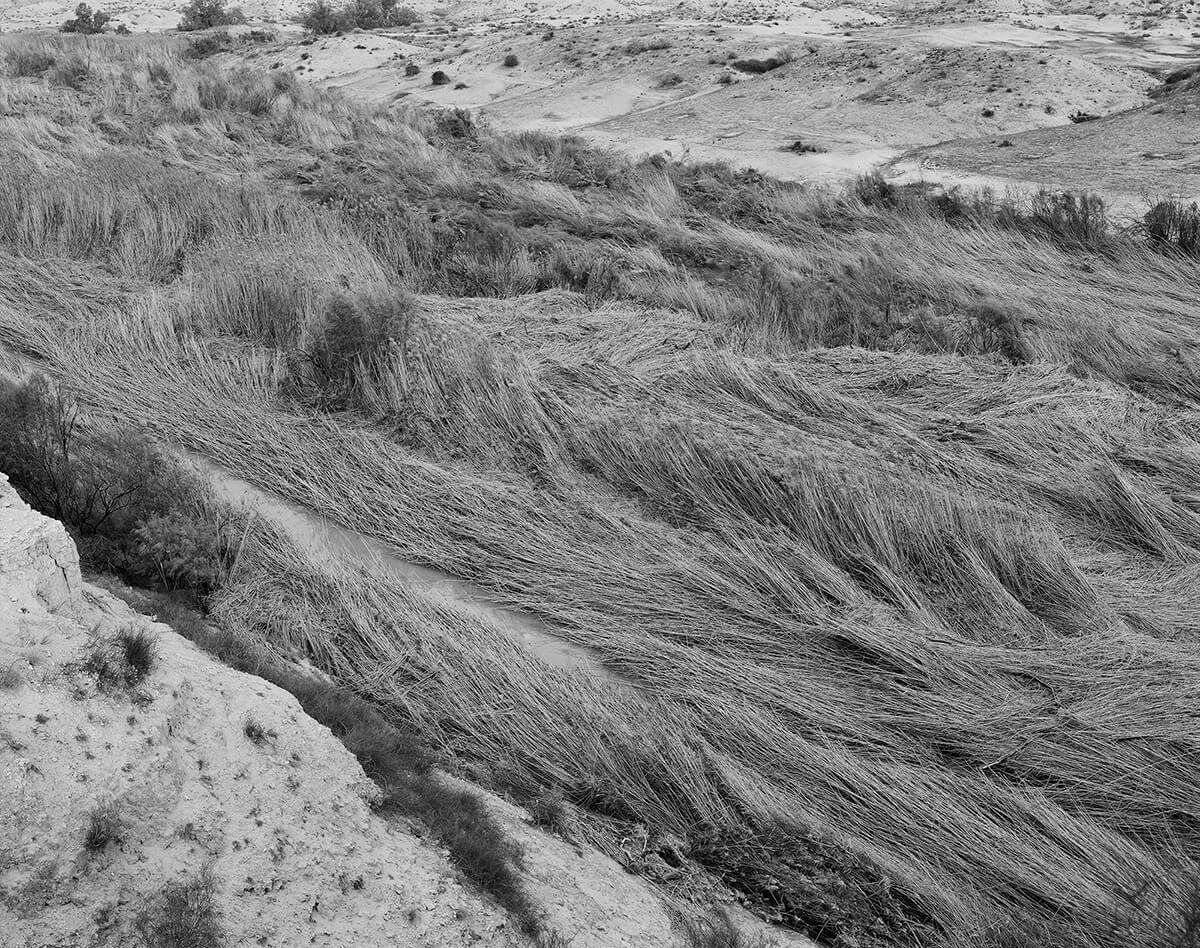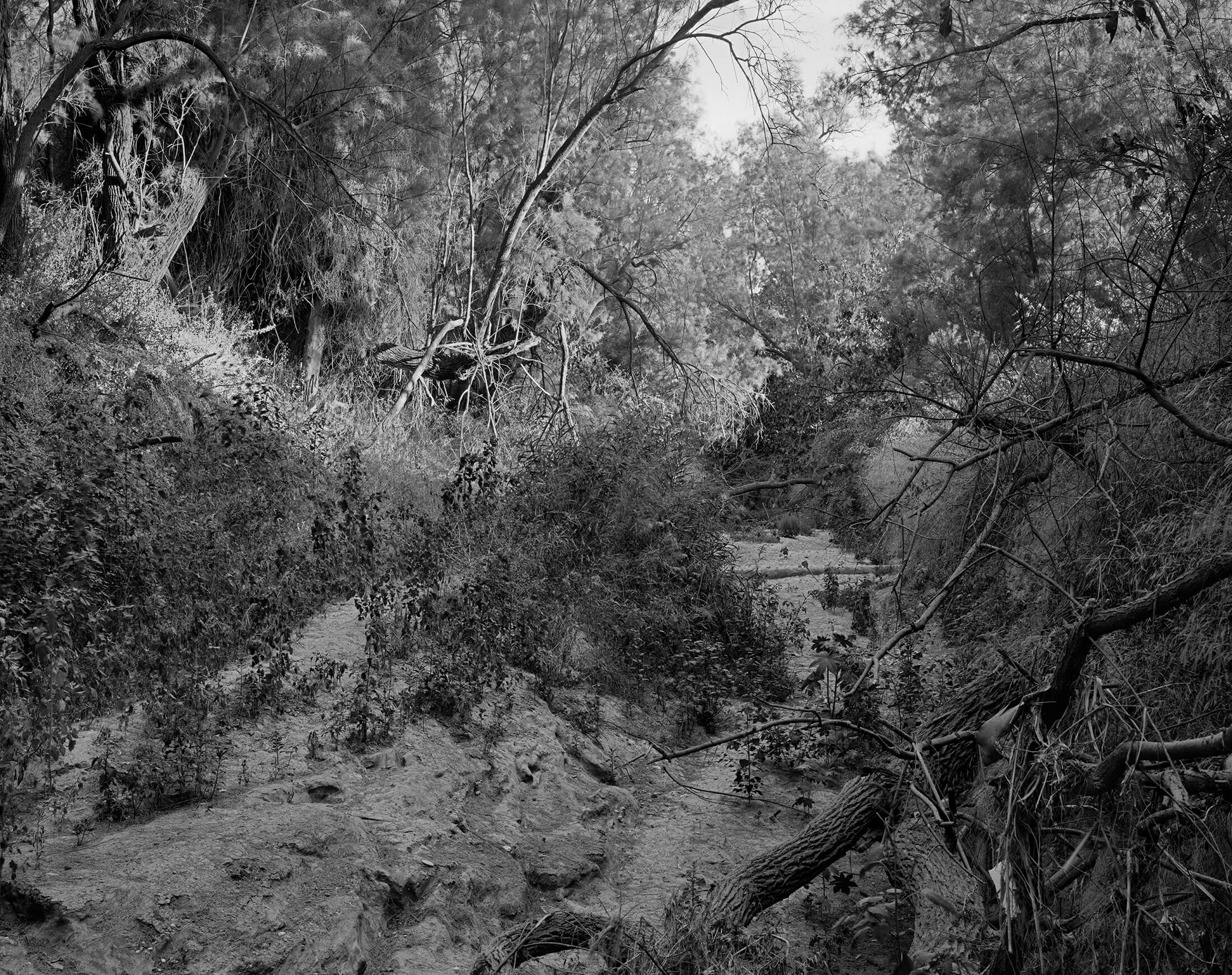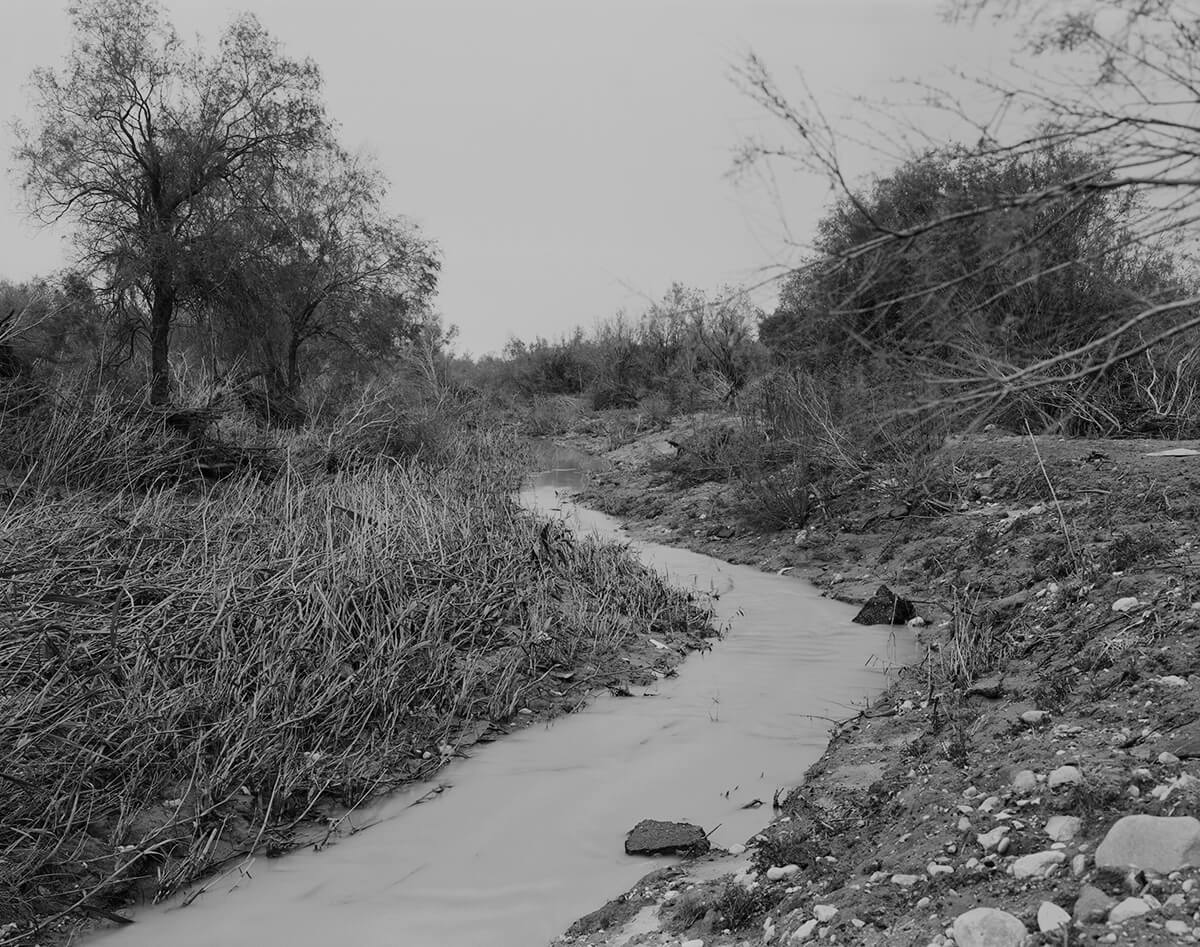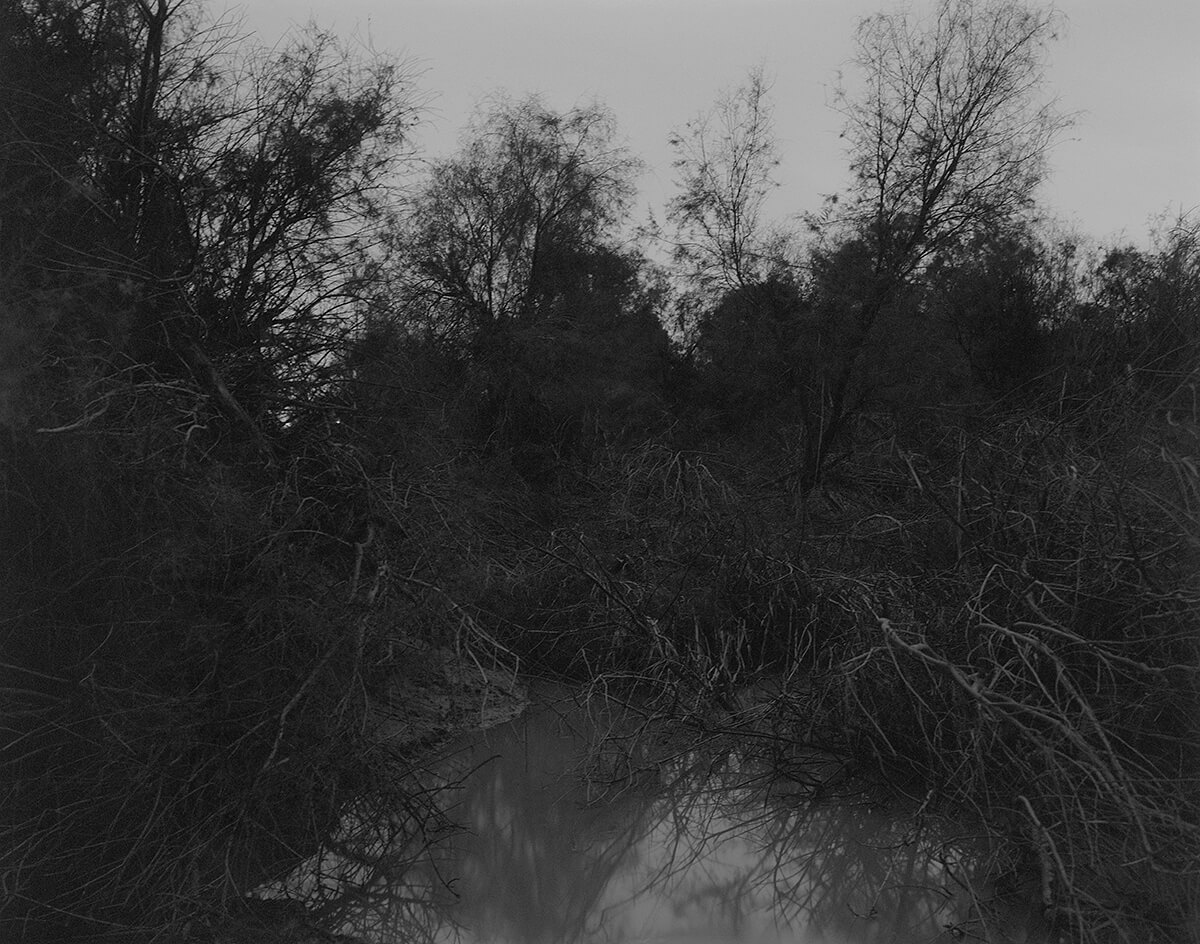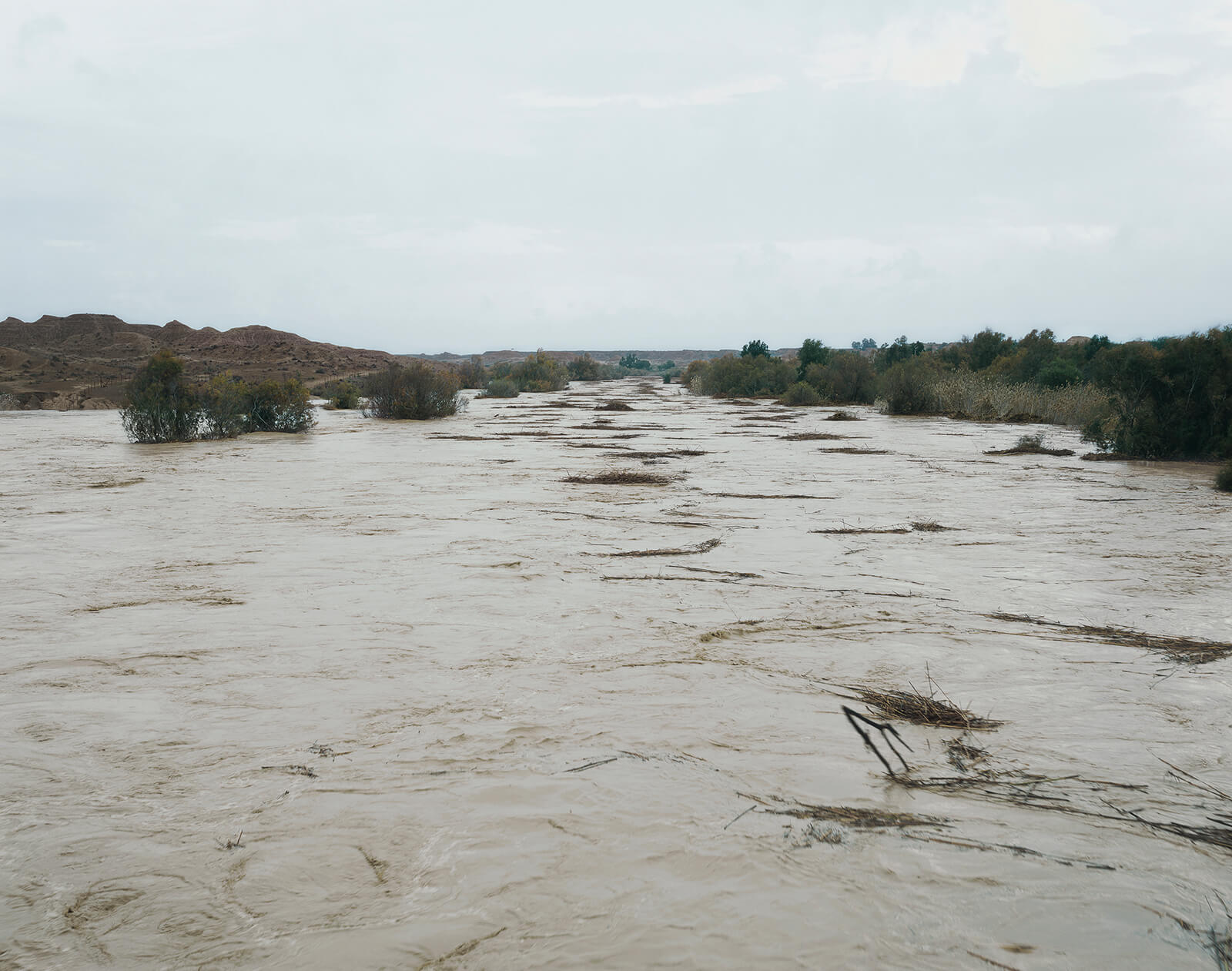After the Flood
In Hebrew, a river that flows only seasonally is called Nachal Achzav — a disappointing river. Historically, European expectations that rivers flow throughout the year were projected onto local rivers, which were found lacking. The moment in which the seasonal river does fulfill its purpose and lives up to these expectations is the flash flood, which has destructive, or at least landscape-altering, effects.
The European photographers who came to photograph the landscapes of the Holy Land toward the end of the nineteenth century fall into two categories: those who were repulsed by the misery of the landscape and the hardship of existence there, and those who regarded the preservation of the ethos of the Old and New Testaments as a mission, a test, and a sacrifice.
The works titled After the flood distill the act of observation down to its fundamental motivations — great expectation mixed with disappointment and the sense of a lost opportunity. These works Recreate expectations embodied in a gaze on a place, an object, or architecture, as well as the immediate recognition of inevitable disappointment. These works search for the ultimate image of a ‘disappointing river’. If disappointment can be captured in a photograph, one can arguably photograph any other abstract, personal emotion.

